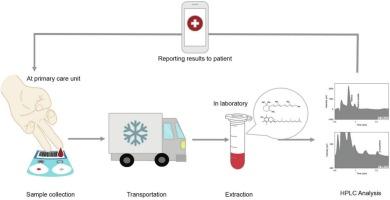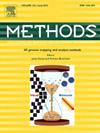Volumetric dried blood spot microsampling: A sustainable, patient-friendly, and practical approach for retinol and α-tocopherol analysis in a clinical setting
IF 4.3
3区 生物学
Q1 BIOCHEMICAL RESEARCH METHODS
引用次数: 0
Abstract
Dried blood spot (DBS) technique has gained significant attention due to the growth of decentralized diagnostics. This technique reduces the number of hospital visits for patients and the workload for personnel in specialized hospitals. This microsampling method provides an environmentally friendly (green) and patient-friendly alternative to conventional phlebotomy. Challenges related to sample heterogeneity in traditional DBS cards have been overcome by the volumetric DBS sampling using new types of commercially available devices. Due to the unstable nature of the analytes, commercial volumetric DBS devices allow blood sampling at primary care units in remote settings and facilitate transport it via temperature-controlled systems. Blood sample stability has improved from 24 h at 4–8 °C to 30 days at −80°C. DBS also requires over 1000 times less shipping and storage space than liquid blood. We optimized the DBS method to require only 10 µL of blood and achieve extraction efficiencies of over 90 % for retinol when the result from validated method is the reference value. However, α-tocopherol recovery varied from 53 to 75 % depending on the filter paper type used. Furthermore, we successfully developed a liquid–liquid extraction method for both analytes from whole blood, with over 90 % recovery. Our approaches eliminate the need for separate serum and erythrocyte extractions, simplify sample preparation, and reduce reagent use and energy consumption. Both devices enable reliable volumetric collection. Our approach makes micronutrient monitoring more accessible and enables sample collection in decentralized settings. This aligns with the objectives of green analytical chemistry and universal health coverage.

体积干燥血斑微采样:一个可持续的,病人友好的,实用的方法视黄醇和α-生育酚分析在临床设置
由于分散式诊断的发展,干血斑(DBS)技术得到了极大的关注。这种技术减少了患者的医院就诊次数和专科医院工作人员的工作量。这种微采样方法提供了一种环境友好(绿色)和病人友好的替代传统的静脉切开术。传统DBS卡中与样本异质性相关的挑战已经被使用新型商用设备的容量DBS采样所克服。由于分析物的不稳定性,商用容量DBS设备允许在偏远地区的初级保健单位进行血液采样,并便于通过温控系统运输。血液样品的稳定性从4-8°C下的24小时提高到- 80°C下的30天。DBS所需的运输和储存空间也比液体血液少1000多倍。我们优化了DBS方法,只需要10µL的血液,当验证方法的结果为参考值时,视黄醇的提取效率超过90%。然而,α-生育酚的回收率根据滤纸类型的不同,从53%到75%不等。此外,我们成功地开发了一种液-液萃取方法,可从全血中提取这两种分析物,回收率超过90%。我们的方法消除了分离血清和红细胞提取的需要,简化了样品制备,减少了试剂的使用和能源消耗。这两种设备都支持可靠的体积收集。我们的方法使微量营养素监测更容易获得,并能够在分散的环境中收集样本。这符合绿色分析化学和全民健康覆盖的目标。
本文章由计算机程序翻译,如有差异,请以英文原文为准。
求助全文
约1分钟内获得全文
求助全文
来源期刊

Methods
生物-生化研究方法
CiteScore
9.80
自引率
2.10%
发文量
222
审稿时长
11.3 weeks
期刊介绍:
Methods focuses on rapidly developing techniques in the experimental biological and medical sciences.
Each topical issue, organized by a guest editor who is an expert in the area covered, consists solely of invited quality articles by specialist authors, many of them reviews. Issues are devoted to specific technical approaches with emphasis on clear detailed descriptions of protocols that allow them to be reproduced easily. The background information provided enables researchers to understand the principles underlying the methods; other helpful sections include comparisons of alternative methods giving the advantages and disadvantages of particular methods, guidance on avoiding potential pitfalls, and suggestions for troubleshooting.
 求助内容:
求助内容: 应助结果提醒方式:
应助结果提醒方式:


